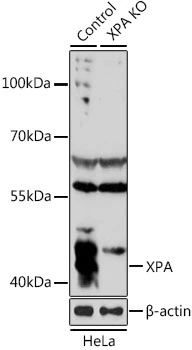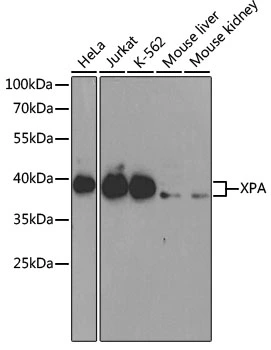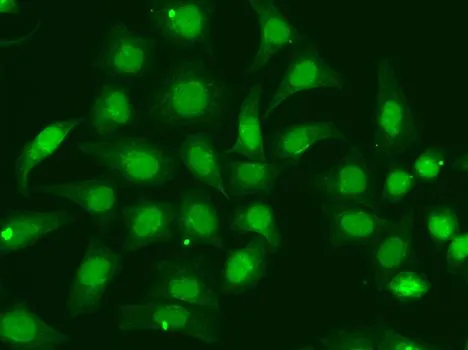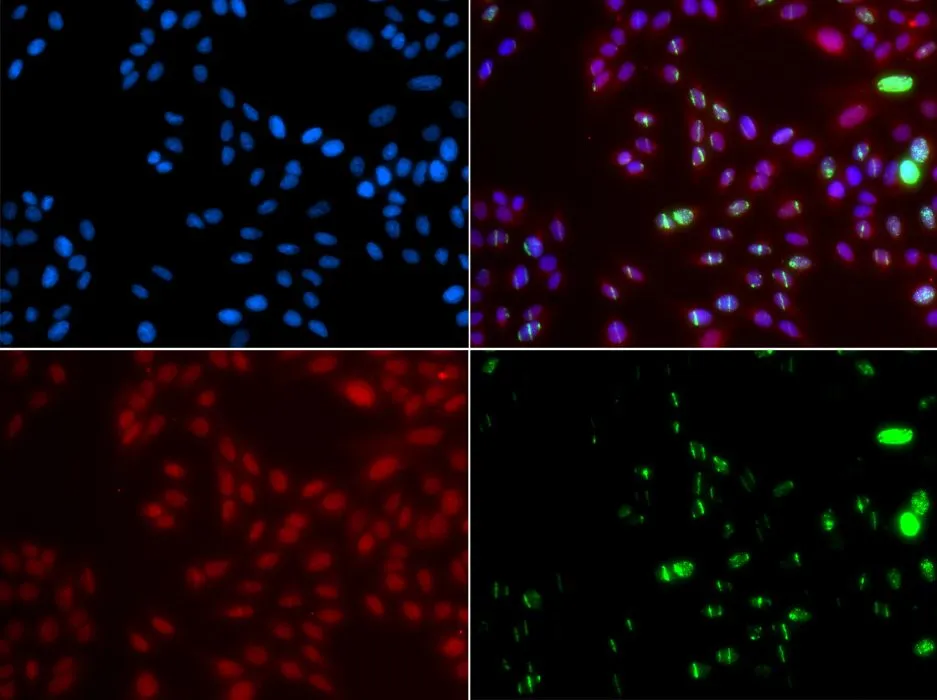
WB analysis of normal (control) and knockout (KO) HeLa cell lysate using GTX55843 XPA antibody. Dilution : 1:1000 Loading : 25microg per lane
XPA antibody - KO/KD Validated
GTX55843
ApplicationsImmunoFluorescence, Western Blot, ImmunoCytoChemistry
Product group Antibodies
ReactivityHuman, Mouse
TargetXPA
Product GTX55843 is not available
Product not available
There may be an alternative product available, please contact our technical support team.
Overview
- SupplierGeneTex
- Product NameXPA antibody - KO/KD Validated
- Delivery Days Customer9
- ApplicationsImmunoFluorescence, Western Blot, ImmunoCytoChemistry
- CertificationResearch Use Only
- ClonalityPolyclonal
- ConjugateUnconjugated
- Gene ID7507
- Target nameXPA
- Target descriptionXPA, DNA damage recognition and repair factor
- Target synonymsDNA repair protein complementing XP-A cells; xeroderma pigmentosum group A-complementing protein; xeroderma pigmentosum, complementation group A; XP1; XPAC
- HostRabbit
- IsotypeIgG
- Scientific DescriptionThis gene encodes a zinc finger protein plays a central role in nucleotide excision repair (NER), a specialized type of DNA repair. NER is responsible for repair of UV radiation-induced photoproducts and DNA adducts induced by chemical carcinogens and chemotherapeutic drugs. The encoded protein interacts with DNA and several NER proteins, acting as a scaffold to assemble the NER incision complex at sites of DNA damage. Mutations in this gene cause Xeroderma pigmentosum complementation group A (XP-A), an autosomal recessive skin disorder featuring hypersensitivity to sunlight and increased risk for skin cancer. [provided by RefSeq, Aug 2017]
- ReactivityHuman, Mouse
- Storage Instruction2°C to 8°C,-20°C or -80°C
- UNSPSC12352203



